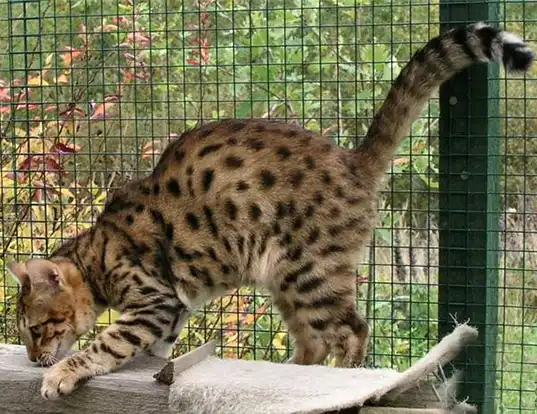Cat Wednesday 2024–
Having cats as pets can be a great source of companionship and comfort. Not only do cats provide unconditional love and affection, but they can also help improve your mental health. Studies have shown that having cats as pets can reduce stress levels, lower blood pressure, and even increase feelings of happiness and well-being. Cats can also help us feel more connected to nature, as they are an important part of the natural world. In addition to providing physical and mental health benefits, cats can also bring joy into our lives with their playful personalities and amusing antics. By providing us with companionship, comfort, entertainment, and relaxation, having cats as pets is an excellent way to enhance our lives and improve our mental health. – Editorial Team
.
Ussuri

Photo Credit: https://www.worldlifeexpectancy.com/cat-life-expectancy-ussuri
The Ussuri cat, also known as the Amur cat or the Siberian tiger cat, is not a recognized breed but rather a term used to describe feral cats found in the Ussuri region, which spans parts of Russia, China, and North Korea. These cats have adapted to the harsh environment of the Ussuri region, displaying characteristics that help them survive in the wild.
- Origin and Habitat:
- The Ussuri region is known for its diverse and often challenging environmental conditions, including dense forests, rugged terrain, and cold climates. It is home to various wildlife species, including the Siberian tiger, which is one of the largest and most iconic big cats in the world.
- The Ussuri cats are believed to have originated from domestic cats brought to the region by settlers or traders. Over time, these cats adapted to the wild environment, developing traits that helped them thrive in the rugged landscape.
- Physical Characteristics:
- Ussuri cats typically exhibit medium-sized bodies with sturdy builds, well-suited for survival in their environment. They have strong muscles and agile bodies, enabling them to navigate through the forests and hunt effectively.
- Their fur is dense and often comes in various colors and patterns, including tabby, solid, and tortoiseshell. The thick fur helps protect them from the cold temperatures prevalent in the Ussuri region.
- These cats may have adaptations such as tufted ears or longer fur around their necks, which are common traits among cold-adapted felines.
- Behavior and Adaptations:
- Ussuri cats are known for their independence and strong hunting instincts. They are skilled hunters, preying on small mammals, birds, and other small creatures found in their habitat.
- Like many feral cats, they are adept at surviving in challenging conditions, often relying on their instincts and natural behaviors to find food and shelter.
- Due to their wild origins, Ussuri cats may exhibit more cautious and reserved behavior compared to domesticated breeds. They are typically wary of humans and may be difficult to approach or handle.
- Conservation Status and Threats:
- While the Ussuri cat population is not well-documented, they face similar threats to other feral cat populations worldwide. Habitat loss, human encroachment, and competition with other predators are among the challenges they may encounter.
- In some areas, efforts are made to control feral cat populations to mitigate their impact on local wildlife, particularly endangered species.
- Recognition and Research:
- While the Ussuri cat is not recognized as a distinct breed by major cat registries, they have drawn interest from researchers studying feral cat populations and wildlife conservation in the Ussuri region.
- Understanding the behavior and ecology of Ussuri cats can provide valuable insights into the dynamics of feral cat populations and their interactions with the environment.
Overall, the Ussuri cat represents a unique population of feral cats adapted to the challenging conditions of the Ussuri region. While they may not be recognized as a distinct breed, they play a role in the ecosystem of their habitat and offer opportunities for research and conservation efforts.

